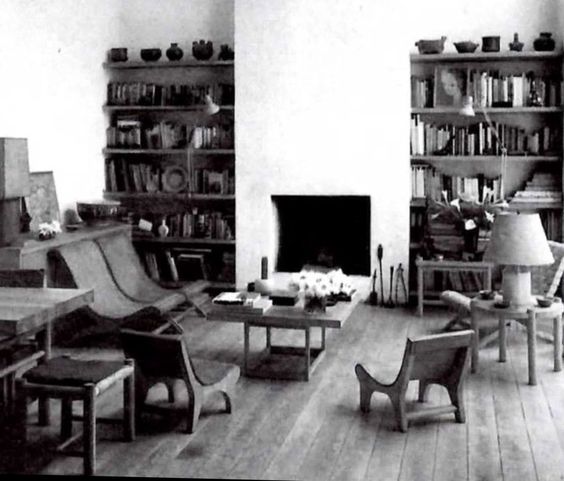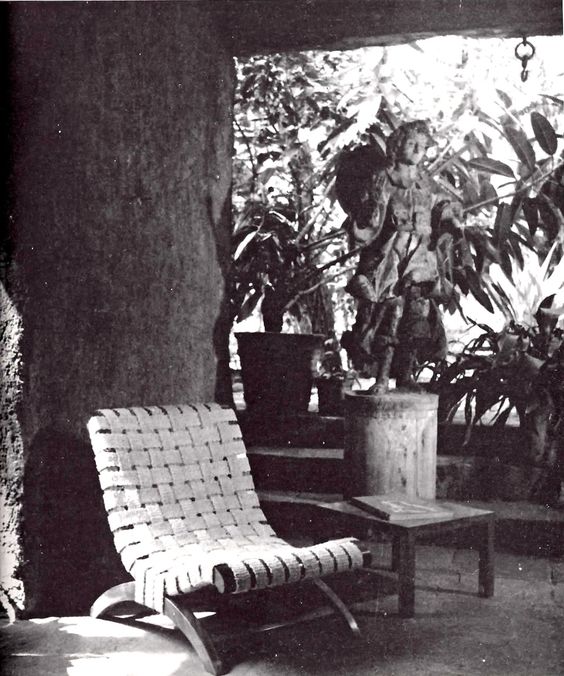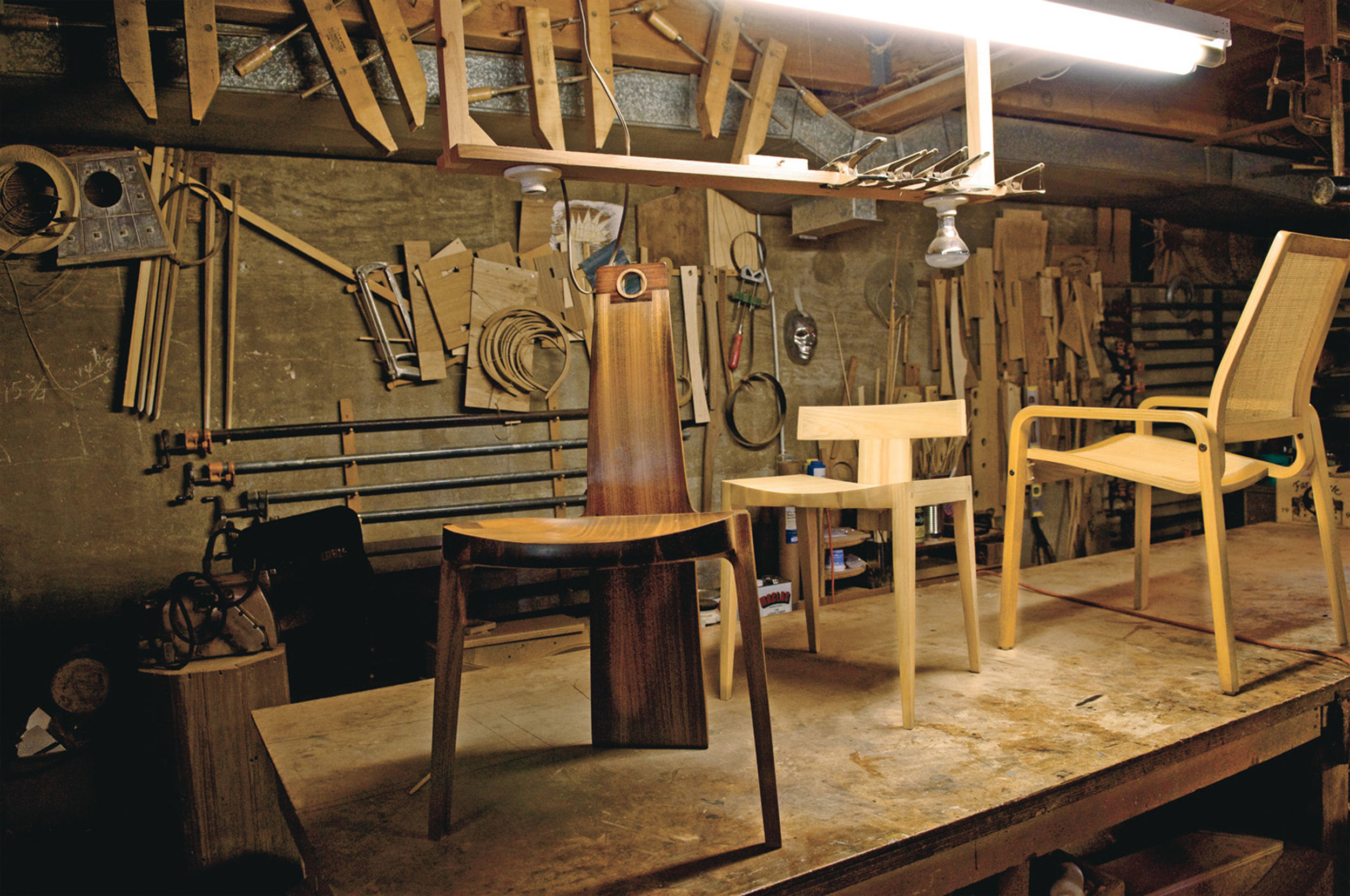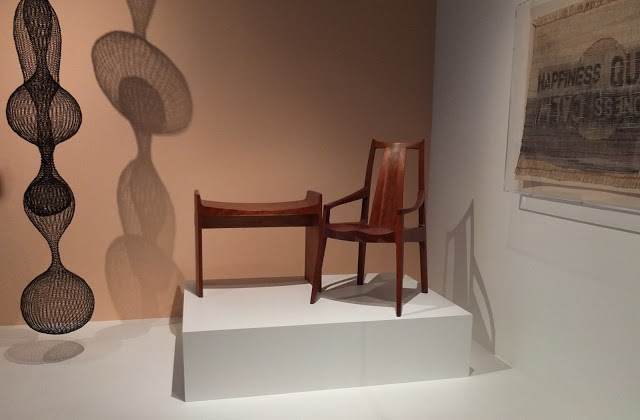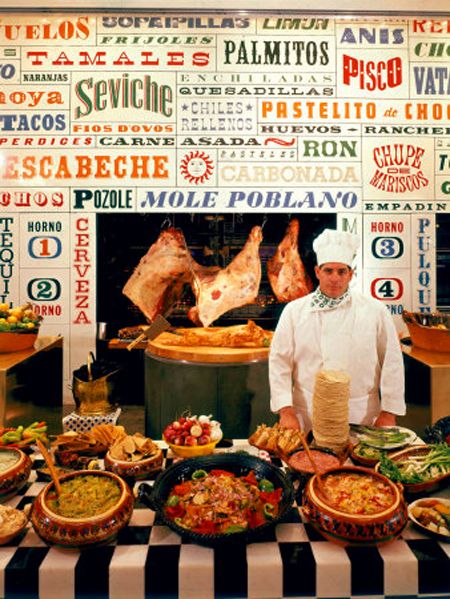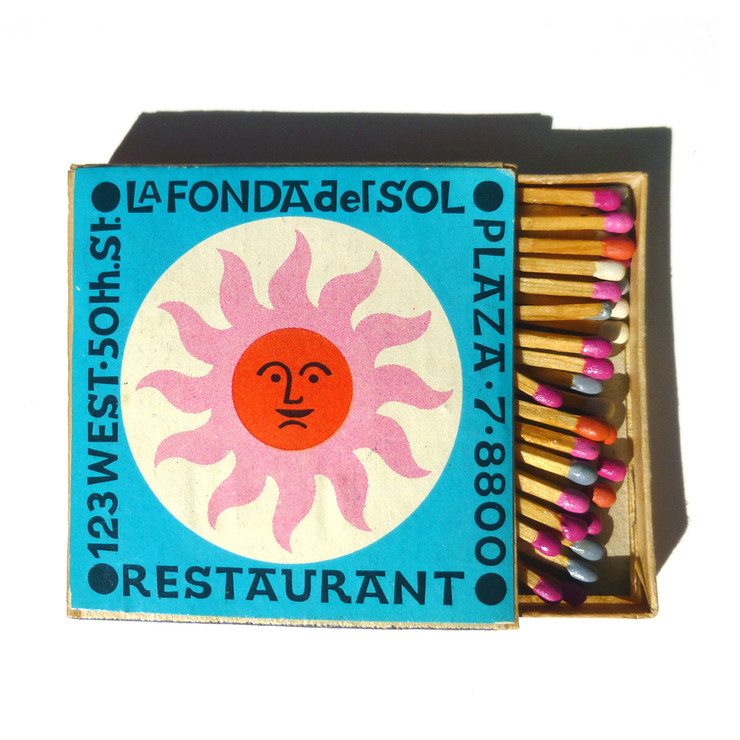Carlos recently found these butaque chairs in his quest to find beautiful Mid-Century designs that we can offer to others through Mid-Century Modern Finds. We think they would look great in a number of interior design settings, but especially love the idea of using them in a modern home.
As we always do with new finds, we scoured the internet and books to figure out their provenance, which led us to a post about Mexican Modernism and furniture design on the Don Shoemaker website/blog (another favorite Mid-Century designer of ours who was an American born Mid-Century designer who lived and worked in Mexico) with a photo of these butaque chairs by Clara Porset in an exhibition at the Museo Franz Mayer in Mexico City in 2006.
Pair of butaque armchairs by Clara Porset in an exhibition at the Museo Franz Mayer in Mexico City, 2006. Photo credit: donshoemaker.com
Clara Porset and the Butaque Chair
Like Don Shoemaker, Clara Porset was not originally from Mexico, but adopted it as her home and immersed herself in the culture. She is best remembered for her reinterpretation of the butaque chair in the 1940's and 1950's, a low, curved lounge chair with a long history in Mexico. The butaque chair is an example of the mestizo culture in Mexico; it is a design that came from Mexico's Spanish conquerers and was adapted by local artisans to become a representation of Mexican nationalism.
Clara Porset with husband, muralist, Xavier Guerrero. Photo credit: un día | una arquitecta / Living room of Clara Porset and Xavier Guerrero in Chimalistac, Mexico City. Photo credit: una vida moderna
Mexican Modernism & Political Activism
Clara Porset was fascinated by the country's craft traditions and travelled around Mexico with her husband, Mexican muralist Xavier Guerrero, studying Mexican art, culture and craft. She then experimented with different shapes, sizes, and materials to create furniture designs that would blend European modernism and Mexican heritage. She removed ornate details to achieve modern simplicity. Clara Porset was part of a group of politically committed architects, designers, and artists who combined modernist style with the use of local materials and techniques to create a distinct Mexican post-revolutionary nationalist style. The use of murals and sculptures depicting rural, indigenous, or industrialist themes was also part of this movement.
Clara Porset's work was favored by several great architects of Mid-Century Mexico, Max Cetto, Mario Pani, Enrique Yáñez, and Luis Barragán. In the 1940's, Clara collaborated with Luis Barragán on many designs for his home and furnishing proposals for his architectural projects.
Left to right: Butaque chair designed by Luis Barragán and Clara Porset in 1945. Photo credit: donshoemaker.com / Clara Porset lounge chairs. Photo credit: ADN Galería / Clara Porset lounge chairs. Photo credit: 1stdibs / Chair by Clara Porset. Photo credit: Galería Julio de la Torre
From Cuba to Mexico
Clara Porset (1895 - 1981) was born in Matanzas, Cuba to a wealthy family, which enabled her to travel to many countries in her youth. She studied at Columbia University's School of Fine Arts in New York, and then in Paris at the Ecole des Beaux Arts, the Sorbonne, and the Louvre. She travelled to Germany where she met Walter Gropius of the Bauhaus Movement who later encouraged her to study at Black Mountain College in North Carolina, where she studied under Josef and Anni Albers. Clara lived in Cuba in the 1930's, working as an interior designer and giving lectures on modern design. She also wrote many design articles for the magazine, Social.
Porset's career in her native Cuba was interrupted when her support for the Cuban resistance movement led to political exile. In 1935, she moved to Mexico City where she remained for the rest of her life. In Mexico, Clara became friends with creative leftists such as Diego Rivera, Frida Kahlo, and Lola Bravo, and in 1938, married Xavier Guerrero, founding member of the Mexican muralist movement and the Mexican Communist Party. Her designs, such as the butaque chair gained acclaim, and she became one of the pioneers of Mexican modernism.
Clara Porset / Photo credit: un día | una arquitecta
Left to right: Exhibit designed by Clara Porset, 'El Arte en la Vida Diaria', in the Palace of Fine Arts in Mexico City, 1952. Photo credit: Core 77 / Patio furniture by Clara Porset. Photo credit: b22 / A butaque chair by Clara Porset. Photo credit: una vida moderna / Iron chair with woven seat and backrest. Photo credit: una vida moderna / Sling chairs designed by Clara Porset in 1957. Photo credit: una vida moderna / Patio furniture selected for exhibition at MoMA in New York City. Photo credit: b22
School of Industrial Design
After the Cuban revolution ended, in 1959, Clara Porset was invited back to Cuba to design furniture for schools and institutions, commissioned by Che Guevara, the Minister of Industries. She had plans to start a School of Industrial Design in Cuba, but it did not work out. She eventually returned to Mexico, where she helped launch the School of Industrial Design at the National Autonomous University of Mexico (UNAM). Clara Porset taught there in the years that followed, and before her death in 1981, Porset donated her home and library of work to establish a scholarship for women who score at the top of their class. The Clara Porset Library at the Faculty of Architecture is considered to be the best design library in Mexico. In 1993, the School of Industrial Design created the Clara Porset National Industrial Design award.
The Clara Porset Library at CIDI/UNAM, Mexico City. Photo credit: donshoemaker.com
Clara Porset's entry for a MoMA international design competition for low cost furniture, circa 1950, Photo credit: cubamaterial.com



